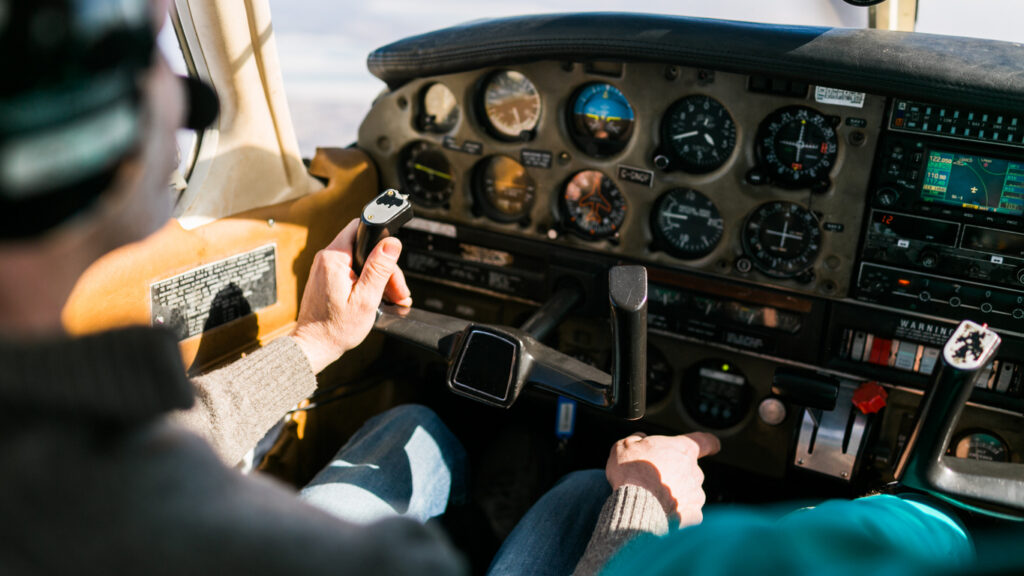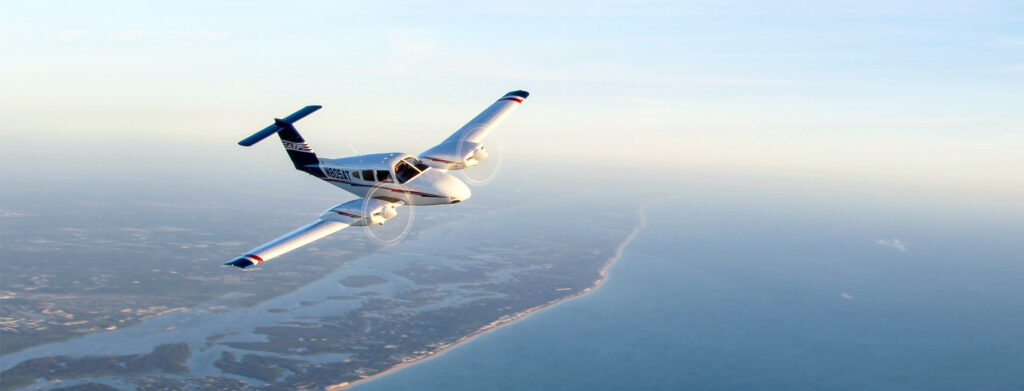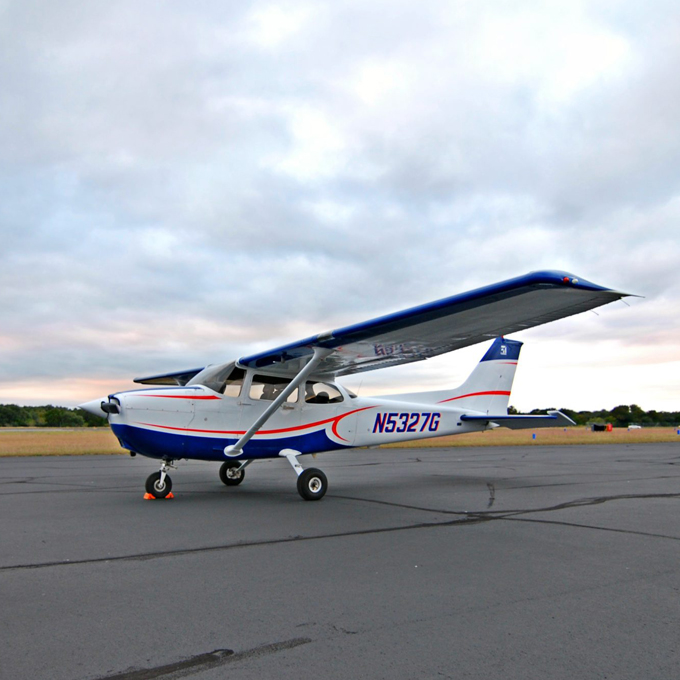If you’ve ever fantasized about soaring through the skies, Texas offers a multitude of flight schools that can turn that dream into a reality. But before you take to the friendly Texas skies, you might be wondering about the cost of this thrilling endeavor. In this article, we’ll explore the expenses involved in learning to fly in Texas, from the costs of flight training programs to the fees for obtaining a pilot’s license. So, fasten your seatbelt and get ready to explore the exhilarating, yet affordable, world of aviation in the Lone Star State!
Flight Training Schools
When considering a career in aviation or simply wanting to indulge in the joy of flying, it’s essential to find the right flight training school that suits your needs and goals. There are several options available, each with its own advantages and costs. Let’s explore the different types of flight training schools and the programs they offer.
1. Private Flight Schools
Private flight schools are independent training institutions that solely focus on aviation education. They offer a wide range of programs and courses tailored to aspiring pilots of all experience levels. Private flight schools often boast experienced instructors, personalized attention, and flexible training schedules. These schools provide an ideal learning environment for individuals looking for a more intimate and dedicated approach to flight training.
1.2. Community College Aviation Programs
Community colleges with aviation programs present a fantastic opportunity for aspiring pilots to receive comprehensive flight training while pursuing an academic degree. These programs offer a blend of theoretical knowledge and hands-on flight experience. Community colleges often have partnerships with local flight schools, allowing students to access top-notch flight training facilities and experienced instructors. Embarking on a community college aviation program can be a cost-effective way to obtain a pilot’s license while earning a degree.
1.3. University Aviation Programs
If you aim to receive a higher education degree along with your flight training, university aviation programs are an excellent choice. These programs integrate flight training with academic coursework, providing a well-rounded education in aviation. University aviation programs are often affiliated with prestigious institutions and offer access to state-of-the-art training facilities and a robust network of industry connections. While university programs may require a more significant time commitment and financial investment, they can open doors to a range of career opportunities in the aviation industry.
2. Types of Pilot Licenses
Becoming a licensed pilot involves obtaining various certifications and ratings that reflect your competency and level of training. Let’s explore the different types of pilot licenses and understand their significance.
2.1. Private Pilot License (PPL)
The Private Pilot License (PPL) is the first step in your aviation journey. With a PPL, you have the freedom to fly for personal reasons and with non-paying passengers. This license allows you to explore the wonders of aviation and build a solid foundation of aeronautical knowledge and flight skills.

2.2. Instrument Rating
The Instrument Rating is an additional certification that enables pilots to fly in adverse weather conditions and rely solely on instruments for navigation. It enhances a pilot’s safety, situational awareness, and enables flights in a broader range of weather conditions. Obtaining an Instrument Rating after an initial Private Pilot License can significantly enhance your flying capabilities and open doors to more advanced flight opportunities.
2.3. Commercial Pilot License (CPL)
The Commercial Pilot License (CPL) is the next step in becoming a professional pilot. With a CPL, you can fly for compensation or hire, providing invaluable opportunities to kickstart a career in aviation. This license requires a higher level of flight experience and knowledge, ensuring that commercial pilots are well-equipped to handle the demands of professional flying.
2.4. Airline Transport Pilot License (ATPL)
The Airline Transport Pilot License (ATPL) is the pinnacle of pilot certifications. With an ATPL, you can serve as the captain or first officer of an airliner. This license demands extensive flight experience, advanced aeronautical knowledge, and comprehensive training in airline operations. Earning an ATPL is generally pursued by pilots aiming for a career in commercial airlines.
3. Costs of Flight Training
While aviation offers an exhilarating and rewarding career path, it’s important to understand the financial implications of flight training. Flight training costs can vary significantly depending on factors such as location, flight school, type of aircraft, and selected training programs.
3.1. Private Pilot License
The cost of obtaining a Private Pilot License (PPL) can range from $8,000 to $15,000, depending on various factors. This includes flight and ground instruction, aircraft rental, fuel costs, and examination fees. The flight training hours required by the Federal Aviation Administration (FAA) for a PPL is a minimum of 40 hours, but it often takes around 60-70 hours to meet the proficiency standards.

This image is property of atpflightschool.com.
3.2. Instrument Rating
Adding an Instrument Rating to your repertoire typically costs between $5,000 and $10,000. This includes flight and ground instruction, aircraft rental, instrument approaches, and examination fees. The FAA mandates a minimum of 50 hours of instrument flight time and simulated instrument time to qualify for an Instrument Rating. However, most pilots require additional hours to be proficient in instrument flying.
3.3. Commercial Pilot License
The cost of obtaining a Commercial Pilot License (CPL) varies widely, ranging from $25,000 to $60,000. This includes flight and ground instruction, aircraft rental, advanced maneuvers training, and examination fees. The FAA requires a minimum flight experience of 250 hours, including specific cross-country, night, and instrument flight time, for a CPL.
3.4. Airline Transport Pilot License
Pursuing an Airline Transport Pilot License (ATPL) is a significant investment. The cost can range anywhere from $60,000 to over $100,000. This includes extensive flight training, advanced simulators, and meeting the FAA’s requirements of 1,500 flight hours and other specific criteria. Obtaining an ATPL is often seen as a long-term investment towards a career in a major airline.
4. Fixed Costs
In addition to the training program costs, there are various fixed expenses involved in flight training. These costs are essential and should be considered when budgeting for your aviation journey.
4.1. Ground School Instruction
Ground school instruction aims to provide the necessary theoretical knowledge required for a pilot’s license. The cost of ground school instruction can range from $200 to $1,500, depending on the program and location. This typically includes classroom instruction, textbooks, and study materials.

This image is property of pilotinstitute.com.
4.2. Pilot Supplies and Materials
When embarking on flight training, you’ll need essential pilot supplies and materials such as charts, navigation tools, flight computers, and logbooks. These items can cost anywhere from $500 to $1,000, depending on the brand and quality of the equipment.
4.3. Medical Examinations
Before obtaining a pilot’s license, you must undergo specific medical examinations to ensure you meet the necessary health requirements. The cost of medical examinations can range from $75 to $150, depending on the physician and location. This ensures that you are physically fit to safely operate an aircraft.
4.4. FAA Written Exams
As part of the licensing process, you must pass various FAA written exams, which assess your knowledge of aviation regulations, procedures, and safety. The cost of these exams is typically around $150 per exam, depending on the testing center.
4.5. Practical Flight Test Fees
Upon completing your flight training, you will need to undergo a practical flight test conducted by an FAA-designated examiner. The examination fee can range from $500 to $1,000, depending on the examiner and the complexity of the license or rating being tested.

This image is property of i0.wp.com.
4.6. Aircraft Rental
A significant portion of the flight training cost is attributed to aircraft rental. The hourly rental rates can range from $100 to $300, depending on the type of aircraft used. The number of flight hours required for each license or rating directly impacts the aircraft rental costs.
5. Variable Costs
In addition to the fixed costs mentioned above, there are certain variable costs associated with flight training. These costs vary based on factors such as flight instructor fees, fuel costs, and landing and airport fees.
5.1. Flight Instructor Fees
Flight instructors play a crucial role in your flight training journey. Their fees typically range from $40 to $100 per hour, depending on their level of experience and the flight school they are affiliated with. The number of flight hours and the frequency of lessons directly impact the total cost of flight instructor fees.
5.2. Fuel Costs
Fuel costs are a significant variable expense during flight training. The price of aviation fuel can fluctuate, currently ranging from $4 to $6 per gallon. The fuel consumption depends on the aircraft’s efficiency and the duration of each flight lesson or practice session.
5.3. Landing and Airport Fees
When utilizing airports for training purposes, landing fees and airport fees may apply. Landing fees can range from $10 to $50 per landing, depending on the airport’s size and location. Similarly, airport fees that grant access to facilities and parking can range from $50 to $200 per month.
6. Miscellaneous Costs
In addition to the primary costs associated with flight training, there are several miscellaneous expenses that aspiring pilots should consider.

This image is property of www.virginexperiencegifts.com.
6.1. Textbooks and Training Materials
Purchasing textbooks, study guides, and training materials specific to aviation can cost anywhere from $200 to $500, depending on the course requirements and availability.
6.2. Headset
A quality aviation headset is an essential investment for clear communication during flight training. Headset prices vary depending on the brand and features, ranging from $200 to $1,000.
6.3. Chart and Navigation Tools
Aviation charts, navigation tools, and software applications are essential for flight planning and navigation. The cost of these resources can range from $100 to $500, depending on their complexity and accuracy.
7. Financial Aid and Scholarships
Recognizing the financial commitment of flight training, several financial aid options and scholarships are available to support aspiring pilots.
7.1. Federal Student Aid Programs
Federal student aid programs, such as the Free Application for Federal Student Aid (FAFSA), offer various grants, loans, and work-study options to eligible students pursuing flight training programs at accredited institutions. It’s important to check the specific requirements and guidelines for aviation-related programs.
7.2. Scholarships for Aviation Students
Many organizations, aviation-related foundations, and flight training schools offer scholarships exclusively for aviation students. These scholarships range in amounts, eligibility criteria, and application deadlines. Thoroughly researching and applying for such scholarships can significantly alleviate the financial burden of flight training.
8. Comparison of Flight Schools
When choosing a flight school, it’s essential to consider factors beyond just the cost. Here are some aspects to compare between different flight schools:
8.1. Tuition and Training Costs
Compare the cost of flight training programs, licensing fees, and any additional charges at various flight schools. While affordability is crucial, ensure that the training programs align with your goals and expectations.
8.2. Reputation and Accreditation
Research the reputation and accreditation of flight schools to ensure they meet rigorous standards of quality and safety. Check for positive student experiences, employment rates, and the school’s affiliation with reputable aviation organizations.
8.3. Training Equipment and Facilities
Evaluate the training equipment, aircraft fleet, and facilities offered by different flight schools. Ensure they have well-maintained aircraft, advanced simulators, and a conducive learning environment to enhance your flight training experience.
9. Factors Affecting Cost
Several factors can influence the overall cost of flight training. Understanding these factors can help aspiring pilots plan and budget more effectively.
9.1. Frequency of Flight Lessons
The frequency of flight lessons directly affects the financial commitment of flight training. Opting for more frequent lessons can help build proficiency and reduce the overall training duration, ultimately minimizing costs associated with aircraft rental and flight instructor fees.
9.2. Individual Learning Pace
Every individual’s learning pace varies. Some may require additional flight hours to achieve proficiency, while others may progress more rapidly. It’s important to consider this factor when estimating the cost of flight training and planning your schedule accordingly.
10. Return on Investment
While flight training incurs substantial costs, it’s crucial to consider the potential return on investment in terms of career opportunities and earnings potential.
10.1. Career Opportunities
A career in aviation offers diverse opportunities, including commercial airlines, cargo operations, flight instruction, charter services, and corporate aviation. Research the current job market and industry trends to understand the potential career paths and growth opportunities in aviation.
10.2. Earnings Potential
Pilots, especially those in commercial aviation, can enjoy a competitive salary and benefits package. However, the earnings potential varies based on factors such as experience, seniority, type of aircraft flown, and the employer. It’s important to research industry standards and salary ranges specific to your desired career path.
In conclusion, flight training costs can vary significantly depending on various factors such as the type of license or rating sought, training school, location, and additional expenses. It’s crucial to carefully research and compare your options to find a flight training program that aligns with your goals, budget, and personal preferences. By considering the comprehensive breakdown of costs and potential financial aid options available, you can embark on a rewarding journey towards becoming a licensed pilot. Remember, the investment in flight training is not only a financial one but an investment in your passion for aviation and the fulfillment it can bring.
